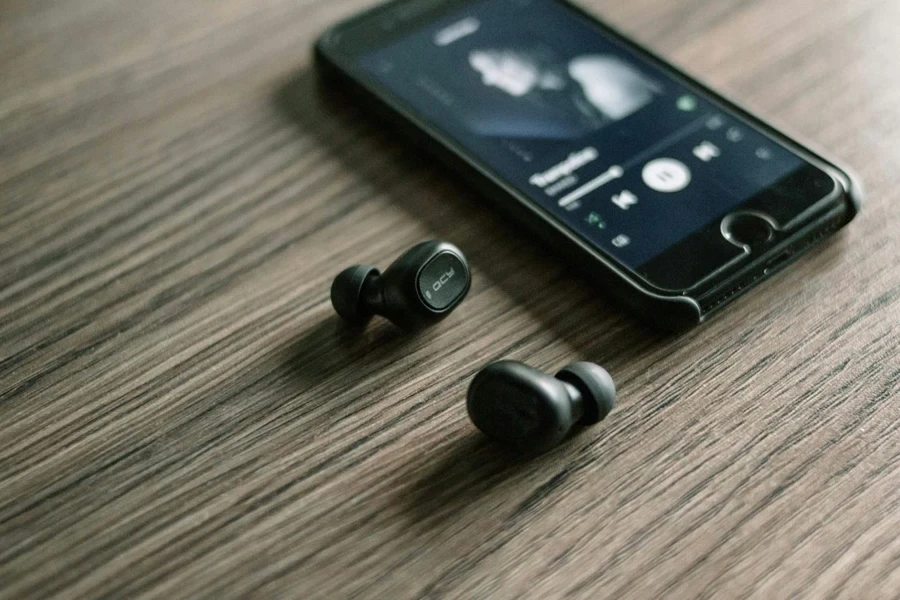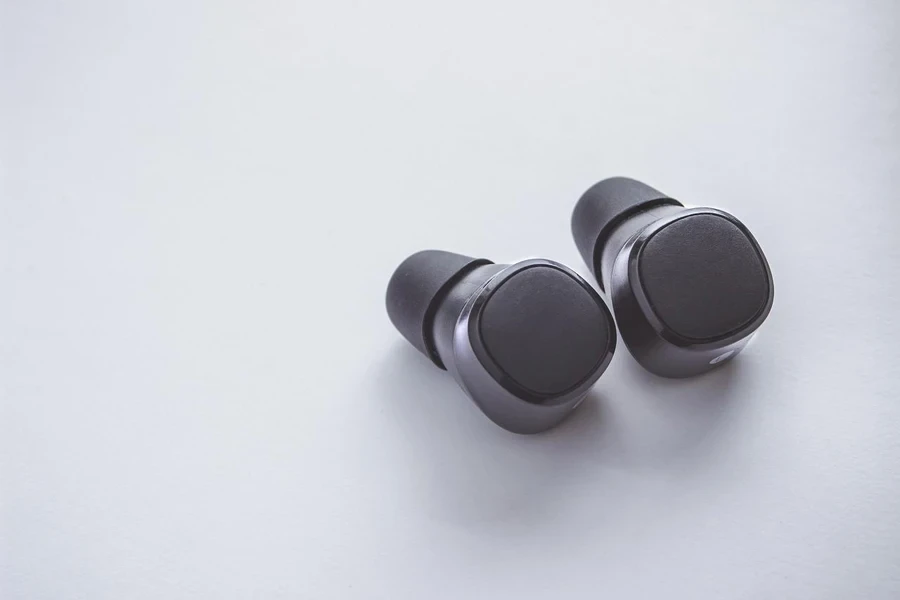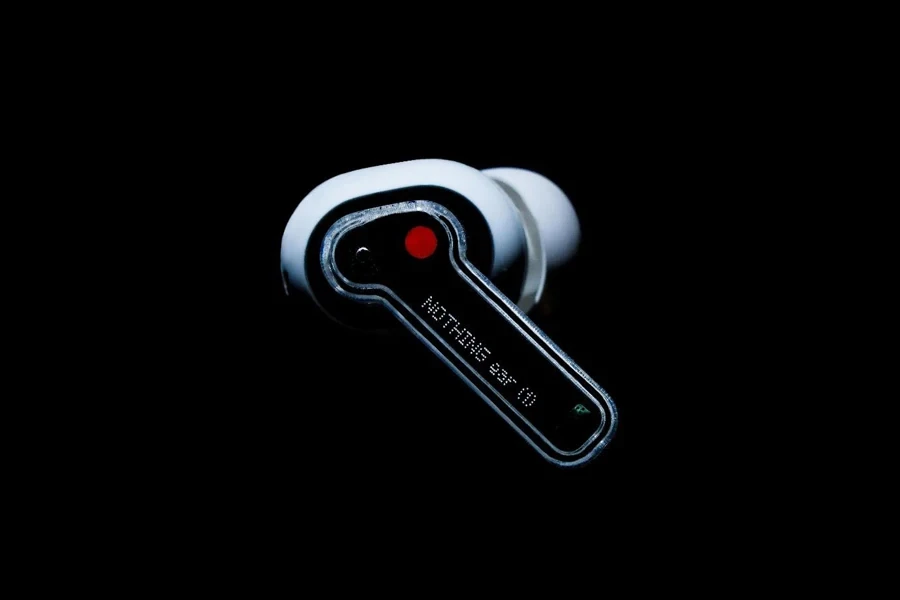Earbuds and in-ear headphones have become essential tools in today’s tech-driven landscape, delivering good quality audio for both professional and personal use. With rapid advancements in noise cancellation, spatial audio, and wireless connectivity, these devices are transforming how users experience sound on the go.
Understanding current market trends and technological innovations is critical for business professionals making informed purchasing decisions. As the market evolves, models with enhanced features like AI-based noise cancellation and multi-device support are shaping consumer preferences. This article explores key market shifts and top-selling models that will drive the future of personal audio.
Table of Contents
● Market overview: growth, key players, and consumer demands
● Technology trends transforming earbuds design
● Top models shaping market trends in 2024
● Conclusion
Market overview: growth, key players, and consumer demands

Rapid growth driven by technological adoption
According to Mordor Intelligence, the global earbuds market is experiencing remarkable growth, with projections showing the market size reaching 937.67 million units by 2029, up from 273.54 million units in 2024, driven by a CAGR of 27.94% during this period. This surge is fueled by increasing consumer demand for wireless options, enhanced sound quality, and features like Active Noise Cancellation (ANC). The rise of smart devices, especially in North America and the Asia-Pacific regions, is a key driver, with brands like Apple, Samsung, and Xiaomi leading in innovation and market share.
Changing consumer preferences and rising demands
As more consumers move away from wired solutions, the shift towards truly wireless earbuds has gained significant traction, with Bluetooth and voice assistant integration becoming essential features. According to industry insights, the growing adoption of smart audio solutions, particularly for fitness enthusiasts and professionals working remotely, is boosting demand. Active Noise Cancellation, alongside water resistance certifications like IPX7, is increasingly sought after as consumers seek greater convenience and immersive experiences, further driving the market upward.
Technology trends transforming earbuds design

Noise cancellation evolution transforming user experience
The advancement of Active Noise Cancellation (ANC) in earbuds has moved from basic passive blocking to sophisticated AI-driven systems that adjust in real-time. Modern earbuds utilize feedforward and feedback microphones to capture external sounds, which are then processed by digital signal processors (DSPs) that generate out-of-phase sound waves, effectively canceling out unwanted noise. With the integration of machine learning algorithms, some earbuds can now predict noise patterns and adjust ANC settings automatically, providing users with an optimal balance of noise cancellation and audio quality. This technology is especially crucial in environments with fluctuating noise levels, such as busy offices or public transport.
High-resolution sound and lossless audio advancements
Audio quality in earbuds has been greatly enhanced by the use of high-resolution codecs such as LDAC, capable of transmitting audio at up to 990 kbps, and aptX HD, which delivers 24-bit/48kHz sound. These codecs enable lossless audio transmission, preserving the original sound quality of music and other audio content. Additionally, many premium earbuds now feature balanced armature drivers, which provide superior high-frequency performance compared to traditional dynamic drivers. By pairing dual or triple driver configurations—combining balanced armature drivers for treble with dynamic drivers for bass—earbuds deliver a more nuanced, layered sound experience. This setup allows for greater separation between frequencies, resulting in cleaner, crisper audio reproduction.
Spatial audio and 3D sound innovations

Spatial audio technology is revolutionizing how users experience sound by creating an immersive, 360-degree audio environment. This effect is achieved through HRTF (Head-Related Transfer Function) algorithms, which simulate the way sound reaches the human ear from different directions. Earbuds equipped with motion sensors and head-tracking technology allow the audio to follow the user’s movements, maintaining the illusion that sound is originating from a fixed point in space. For example, turning your head during playback of a movie or game changes the direction of the sound source, replicating the experience of being in a physical space with speakers surrounding the user.
Durability and water resistance standards
The incorporation of IPX7 and IP68 ratings in earbuds reflects the growing demand for durable, water-resistant designs. IPX7 certification allows earbuds to be submerged in up to 1 meter of water for 30 minutes, making them highly resistant to sweat and rain. Higher ratings like IP68 add dustproofing and even greater water resistance, allowing devices to withstand extended exposure to wet environments. These standards are becoming essential in fitness-focused earbuds, ensuring longevity even during intense workouts or outdoor activities. Additionally, advancements in nano-coating technologies are enabling manufacturers to protect the internal circuitry from moisture, extending the overall lifespan of these devices.
Top models shaping market trends

Apple AirPods Pro 2
The Apple AirPods Pro 2 are at the forefront of the earbuds market, thanks to their Adaptive Transparency Mode and spatial audio capabilities. The Adaptive Transparency Mode automatically adjusts to external noise levels, filtering out loud sounds while allowing ambient noise for safety. The H2 chip enables real-time audio processing, enhancing both noise cancellation and sound clarity. Apple’s spatial audio with dynamic head tracking delivers an immersive experience, especially for video content, making users feel as though sound is moving with their head. The six-hour battery life, combined with an IPX4 rating for sweat and water resistance, further cements their position as a top choice for professionals and audiophiles alike.
Bose QuietComfort Earbuds 2
The Bose QuietComfort Earbuds 2 are widely recognized for their good noise cancellation technology. These earbuds use CustomTune sound calibration, which adjusts noise cancellation and audio output based on the user’s ear shape. This personalized approach ensures superior performance in blocking ambient noise across a variety of settings. The 9.3mm full-range dynamic drivers deliver balanced sound with deep bass and crisp highs, offering an immersive listening experience. Despite their relatively compact design, the earbuds feature an IPX4 rating, making them suitable for both casual and active users. The six-hour battery life with ANC enabled is competitive, and their ability to deliver unparalleled noise isolation makes them a top contender in the high-end market.
Technics EAH-AZ80
The Technics EAH-AZ80 earbuds stand out with their triple-device multipoint connectivity, allowing seamless switching between devices like smartphones, laptops, and tablets. This feature is particularly appealing to professionals who need constant connectivity across multiple platforms. The 10mm dynamic drivers paired with LDAC codec support ensure high-resolution audio, delivering clean, detailed sound across the frequency spectrum. These earbuds also offer seven different ear tips to ensure an ideal fit, improving both comfort and passive noise isolation. With an IPX4 rating and up to seven hours of playback on a single charge, the Technics EAH-AZ80 balances premium features with practical use.
Nothing Ear (a)
For those seeking good quality audio at a lower price, the Nothing Ear (a) delivers impressive performance at a fraction of the cost of premium models. These earbuds feature 11.6mm dynamic drivers and support for high-resolution codecs, offering clear sound with punchy bass. The active noise cancellation (ANC) is competitive for its price range, and the transparent design sets them apart in terms of aesthetics. With 5.5 hours of battery life (ANC on) and an IPX4 rating, these earbuds are ideal for budget-conscious consumers who don’t want to sacrifice essential features like sound quality and water resistance.
JLab JBuds Mini
The JLab JBuds Mini are among the smallest and most affordable options in the market, yet they are packed with valuable features. Despite their compact size, these earbuds offer multipoint connectivity and customizable EQ settings via the JLab app. The 5.5-hour battery life, coupled with a charging case that extends usage to 20 hours, provides solid performance for their price range. Though lacking in ANC, their passive noise isolation and IP55 water resistance make them an attractive option for users looking for portability and durability on a budget.
Samsung Galaxy Buds 2 Pro
The Samsung Galaxy Buds 2 Pro excel within the Samsung ecosystem, offering 24-bit high-resolution audio and spatial audio with head tracking. These earbuds use a two-way driver system (10mm woofer and 5.4mm tweeter) to deliver clear sound with deep bass and sharp treble. The IPX7 rating ensures durability, and the five-hour battery life with ANC enabled positions them as a top choice for Samsung device users who prioritize seamless connectivity and premium sound.
Conclusion

The earbuds market continues to evolve rapidly, driven by continuous innovations in noise cancellation, sound quality, and smart connectivity. With advancements like AI-driven ANC, spatial audio, and high-resolution codecs, the personal audio experience is becoming more immersive and tailored to individual preferences. Top-selling models from leading brands are shaping market trends, while budget-friendly options are making good quality features accessible to a broader audience. This ongoing technological progress is fueling consumer demand and propelling the market toward significant growth in the coming years.




